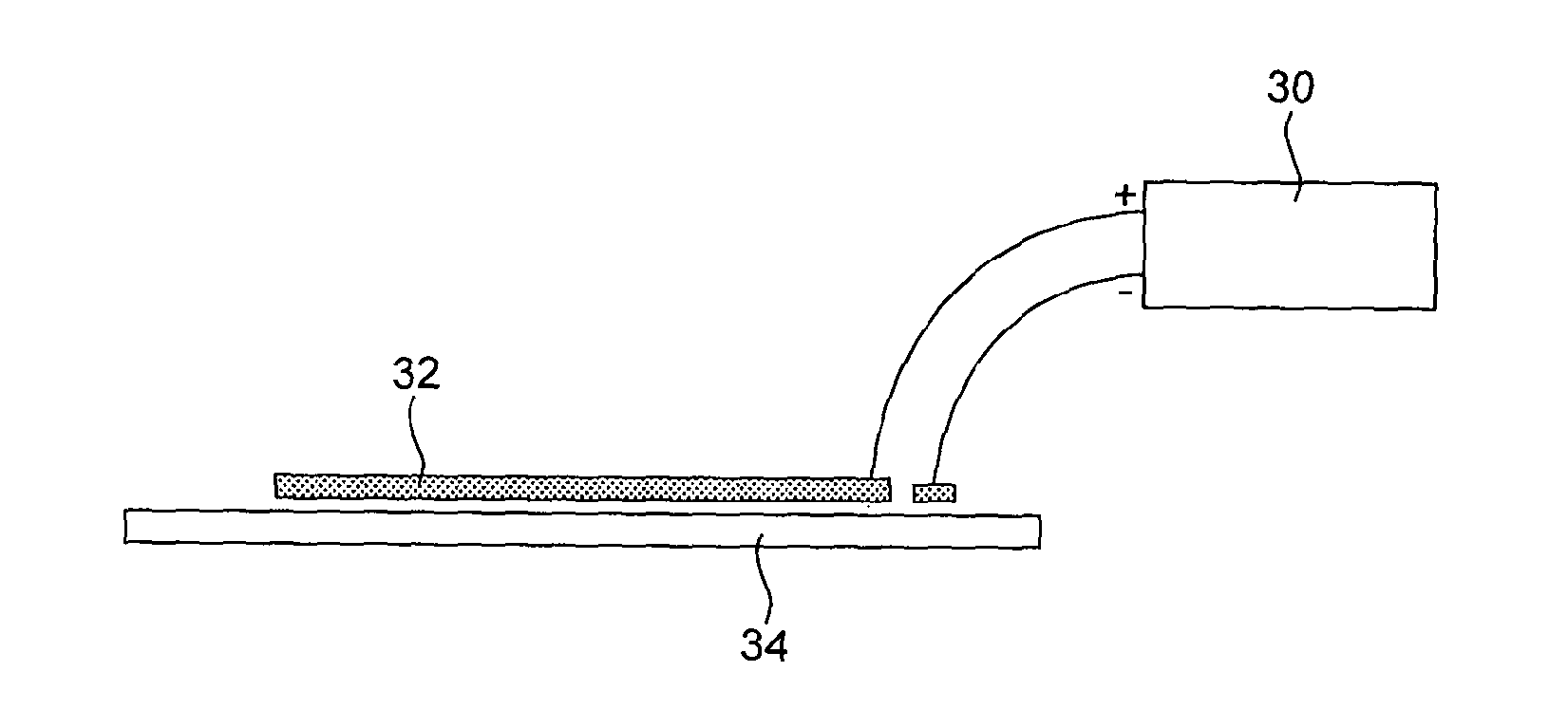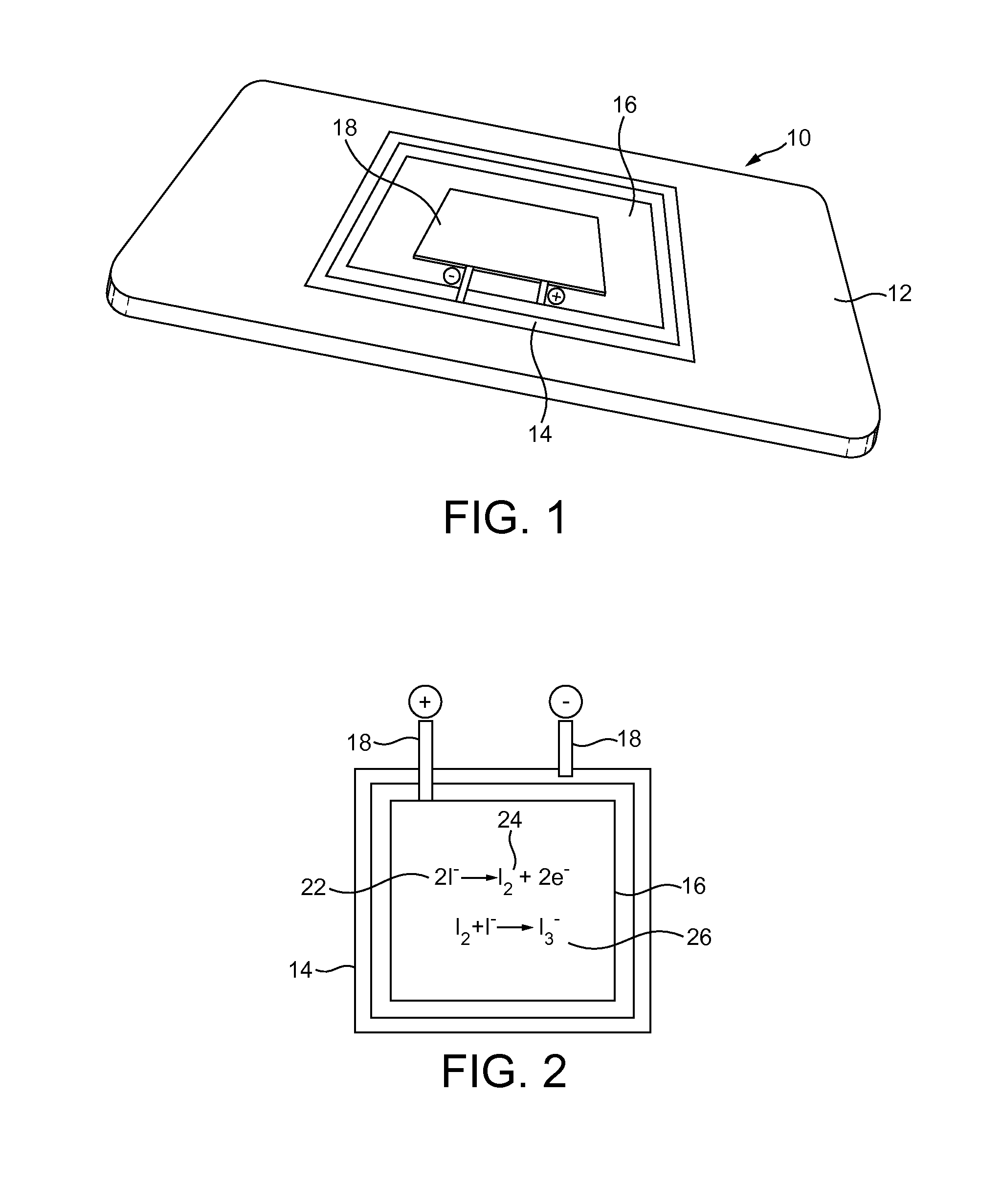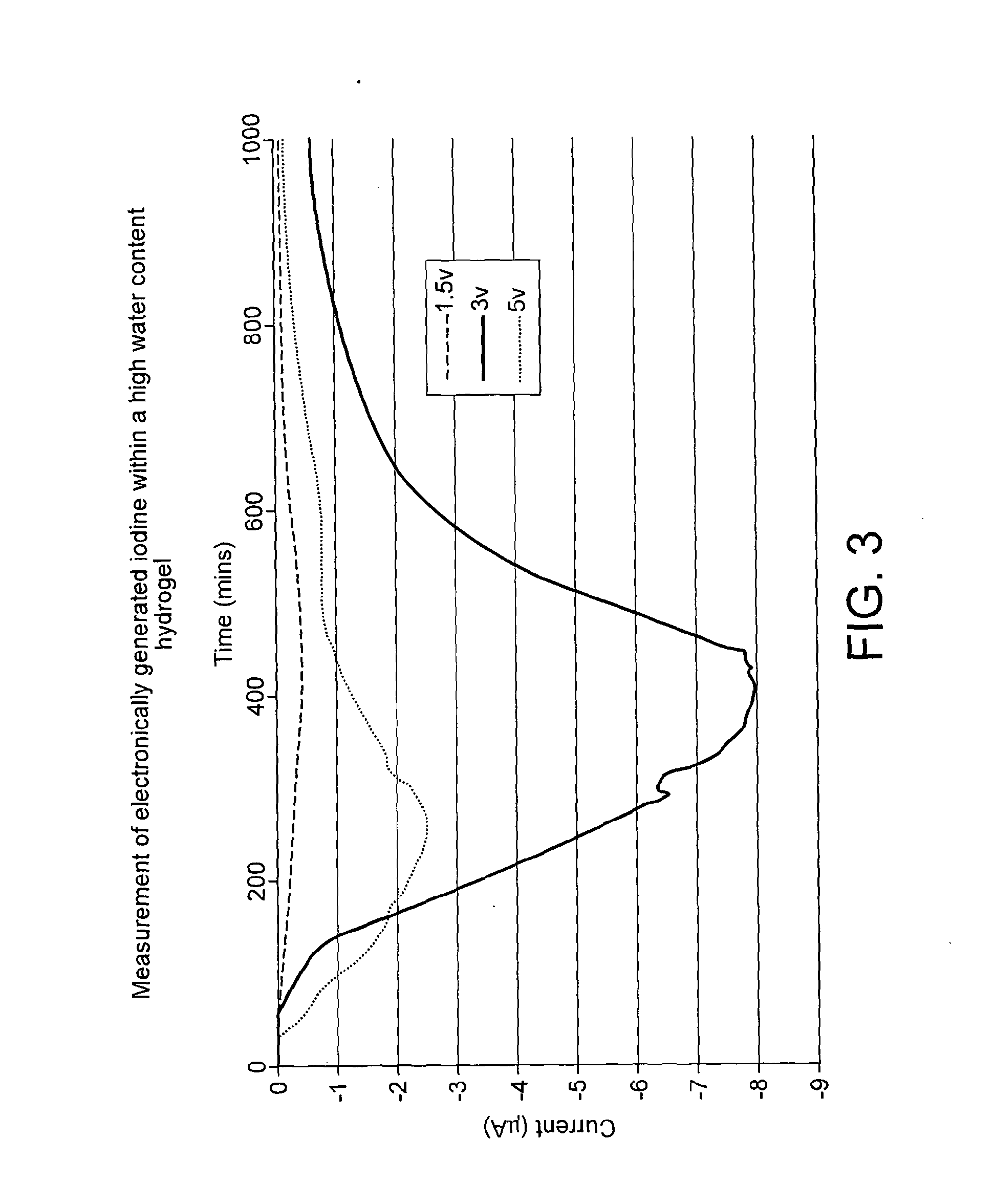Skin dressing with electrodes and physiologically active precursor substance
a skin dressing and precursor substance technology, applied in the field of skin dressings, can solve the problems of short shelf life, large number of physiologically or antimicrobially active species that are difficult to administer from such a skin dressing, and the dressings are more complex
- Summary
- Abstract
- Description
- Claims
- Application Information
AI Technical Summary
Benefits of technology
Problems solved by technology
Method used
Image
Examples
example 1
[0072]A crosslinked polymeric hydrogel containing iodide ions, was placed onto an electrochemical sensor. The hydrogel was approximately 5 cm×5 cm×0.25 cm. The electrochemical sensor was of a 3 electrode design, constructed from 3 screen printed carbon tracks, with large counter, small working (approximately 2 mm diameter) and silver / silver chloride reference electrodes. The sensor was connected to an Ezescan potentiostat (Whistonbrook Technologies, Luton, UK) and ran using the accompanying Ezescan software.
[0073]Two screen printed carbon electrodes were placed onto the upper surface of the exposed hydrogel, where the one being used as the anode was located directly above the working electrode on the electrochemical sensor. The cathode was placed close to, but not touching, the anode. The anode and cathode carbon electrodes were connected to batteries to provide either 1.5, 3 or 5 volts. Detection of molecular iodine was performed on the working electrode of the electrochemical sens...
example 2
[0076]Four hydrogel variations were prepared with sodium sulphate at 50 mM, and with pH buffered at 7, 6, 5 and 4 (citrate buffer). Voltages of 2.5V and 5 V were applied to pieces of the four hydrogel variants through a carbon film electrode for 15, 30, 45, 60 and 120 minutes.
[0077]Tests were carried out on each gel type at each time interval to determine the presence of hydrogen peroxide by means of a standard starch iodide reagent. Duplicate gel pieces were also tested with an oxygen electrode to determine the amount of oxygen dissolved in the hydrogel.
[0078]The results showed that hydrogen peroxide was produced at a useful rate in all of the gel types (i.e. at each of the pH values) and that the amount increased steadily over the time period of the test. Raised levels of oxygen were found in each gel piece tested, and the levels reached saturation with longer times of electrochemical reaction.
example 3
[0079]Iodide (for example potassium iodide) will undergo oxidation to form iodine. In an electrochemically driven oxidation, this will occur at potentials of over approximately +400 mV (relative to silver / silver chloride reference electrode) via the following equation:
I−½I2+e− (electrons)
[0080]This oxidation will accelerate if the potential is increased. The generation of iodine via the electrochemical oxidation of iodide was demonstrated using a graphite carbon / carbon black electrode system.
[0081]In general, two electrodes, which acted as the anode and cathode, were positioned on an iodide-containing hydrogel, and a potential of +3.2V was applied. Iodine was generated at the anode, as seen by the change in colour from colourless (iodide) to orange (iodine).
[0082]In detail, electrodes of two specific designs (Archimed LLP) were screen printed onto a polyester backing by Jaybee Graphics Ltd, using an electrically conductive carbon paste (Acheson Electrodaq 423SS). The surface area of...
PUM
 Login to View More
Login to View More Abstract
Description
Claims
Application Information
 Login to View More
Login to View More - R&D
- Intellectual Property
- Life Sciences
- Materials
- Tech Scout
- Unparalleled Data Quality
- Higher Quality Content
- 60% Fewer Hallucinations
Browse by: Latest US Patents, China's latest patents, Technical Efficacy Thesaurus, Application Domain, Technology Topic, Popular Technical Reports.
© 2025 PatSnap. All rights reserved.Legal|Privacy policy|Modern Slavery Act Transparency Statement|Sitemap|About US| Contact US: help@patsnap.com



